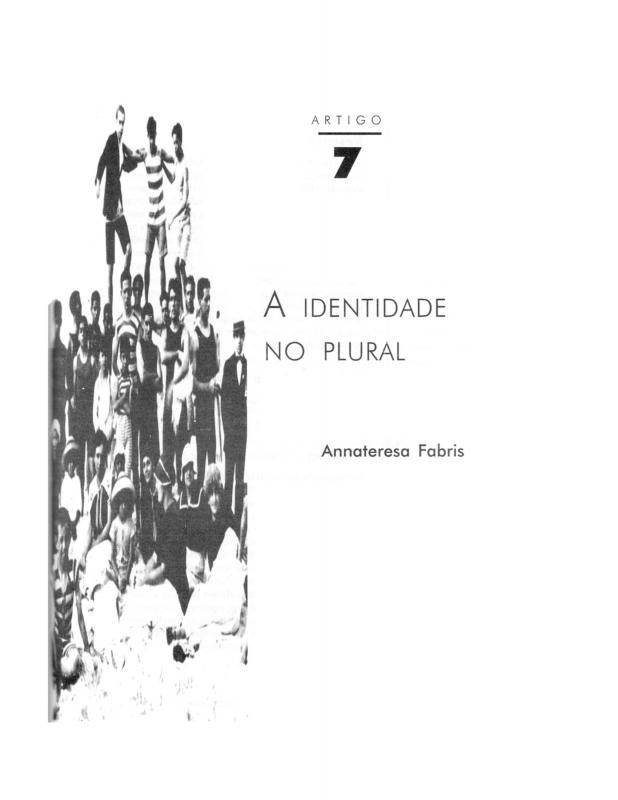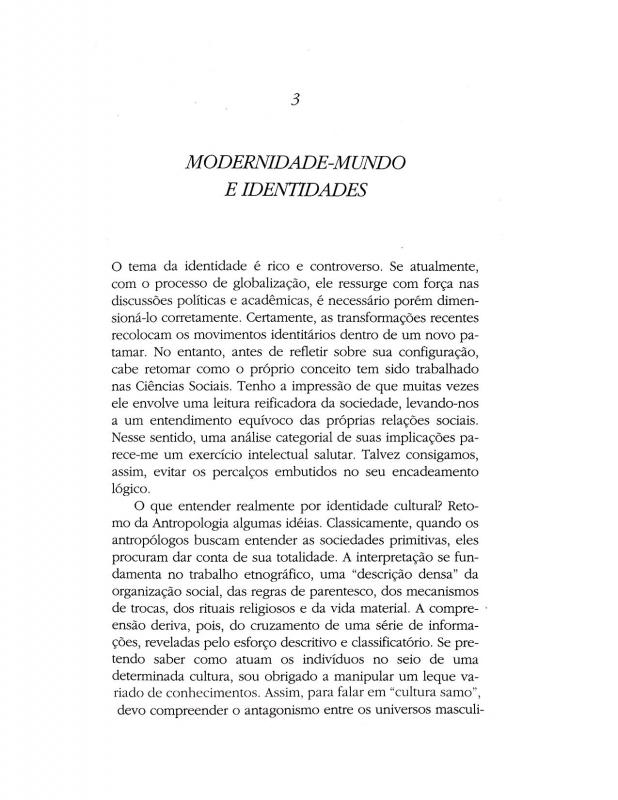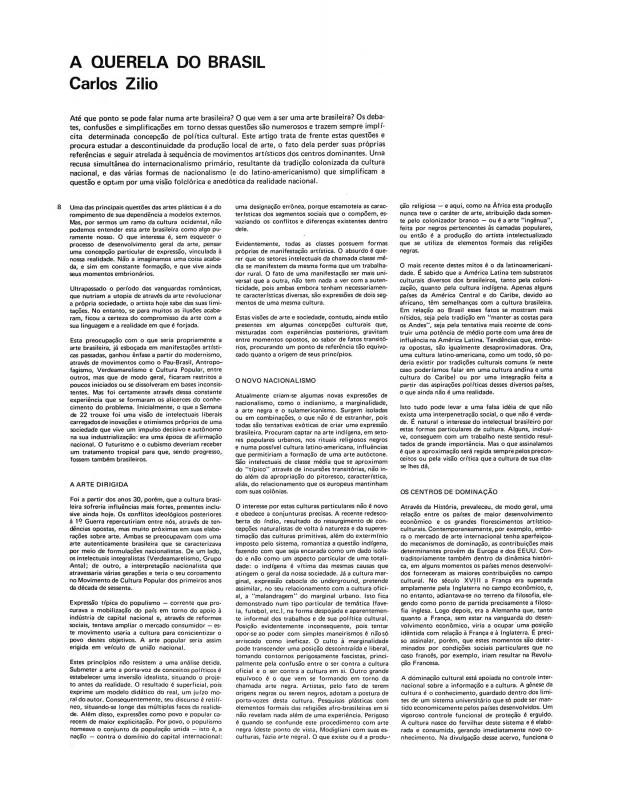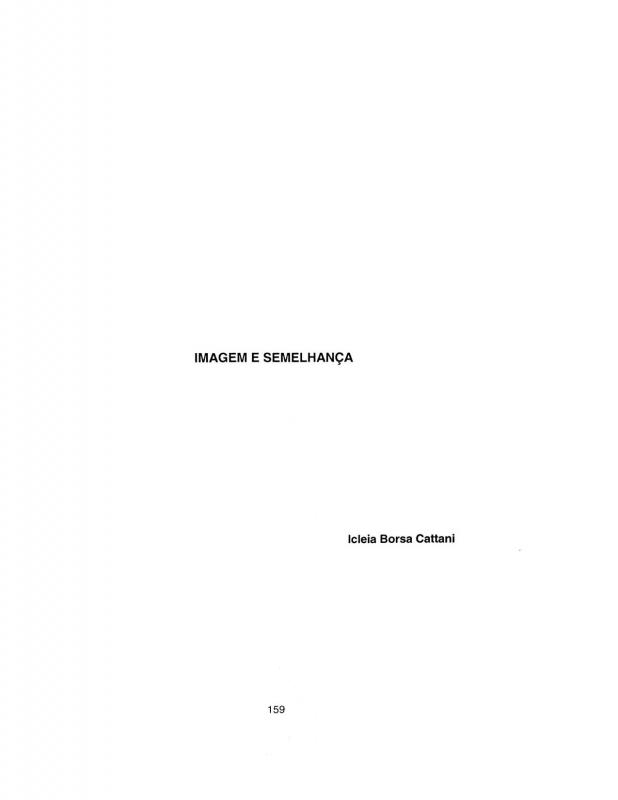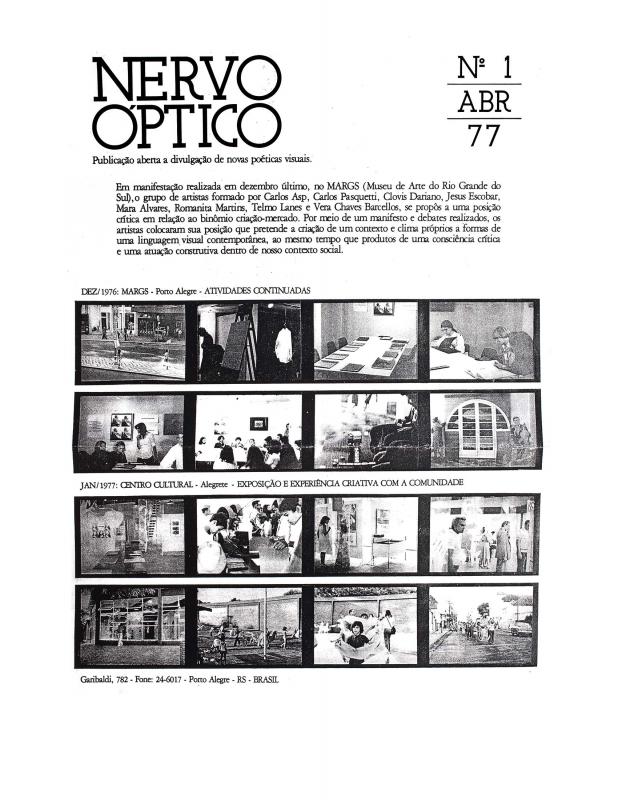Before writing up this study on the cultural identity of the contemporary art world in the state of Rio Grande do Sul, Icleia Borsa Cattani performed extensive research. She investigated the activities offered by several galleries and public institutions, including collectors and artists, starting in the late 1970s. In her opinion, that was when the media used for producing art and the distribution media in the southernmost state of Brazil could no longer be described as “different” based on merely regional characteristics. Instead, they assumed a “qualitative equivalence” with the art created and distribution media used by the hegemonic art centers, in Brazil and around the world. One source for her research was testimonials collected from gallery owners, collectors, and art critics including Elcio Rossini, Gaudêncio Fidelis, Mário Rohnelt, Wilson Cavalcanti, Lorena Geisel, Evelyn Berg, and Maria Helena Webster. The artists mentioned in her text included Ado Malagoli, Iberê Camargo, Vera Chaves Barcellos, Diana Domingues, Rafael França, Luiz Gonzaga Mello Gomes, Karin Lambrecht, Jailton Moreira, and the group Nervo Óptico.
The key issue of identity, the hallmark of the 1970s, is at the heart of this research project. In Brazil, there were other complementary studies. Aracy Amaral wrote about an Argentine writer and professor who studied this issue in depth in “Damián Bayón: um olhar sobre a América” [doc. no. 776714]. Addressing the issue on a continental level, Annateresa Fabris developed the text “A identidade no plural” [doc. no. 808207]. The theoretician of cultural globalization, Renato Ortiz, examines the concept of “identity” in the contemporary world against sociological parameters in his brilliant essay, “Modernidade-mundo e identidades” [doc. no. 1111333]. In the journal Malasartes, we find an essay by the militant artist Carlos Zilio, “A querela do Brasil” [doc. no. 1074928]. This essay became the starting point for Zilio’s doctoral thesis, which was subsequently published in a book under the title A querela do Brasil-A questão da identidade da arte brasileira (1982).
Icleia Borsa Cattani wrote another essay about artists working in southern Brazil entitled “Imagem e semelhança” [doc. no. 1111397]. Regarding the regional art world of Rio Grande do Sul, the writer refers to the group Nervo Óptico toward the end of her essay. For a description of the works of this group’s first exhibition and the artists’ testimonials about the semiotic intentions of the work, the ICAA archives have copies of the thirteen issues of the group’s journal, Nervo Óptico, from [doc. nos. 1110913 to 1110925].


